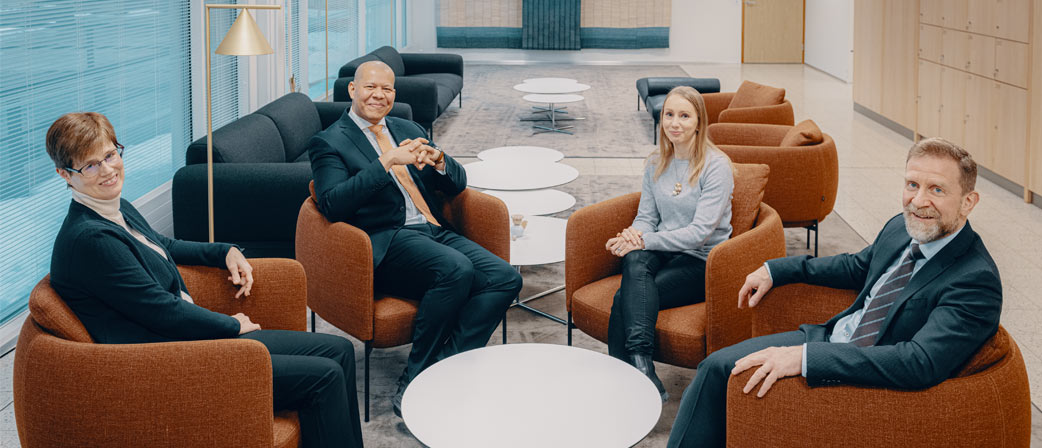Innovation partnership is a learning journey of procurement
The Ministry of the Interior is very interested in people’s sense of security. They want to measure and understand it deeply in order to keep the level of sense of security high. To support this goal, experts have gathered data from surveys and analysed it.
However, data acquirement has not been sufficiently extensive or systemised, and the speed of data updating has left room for improvement. Help was sought from modern technical solutions and artificial intelligence.
Open-mindedly towards the new
The Ministry of the Interior’s Administration and Development Department’s Strategic Steering and Development unit started thinking of the best way to solve the problem that has surfaced. The team noted early on that some system acquirement was forthcoming, but there was no full certainty of what would be needed. Hanna-Miina Sihvonen, Senior Specialist, had heard good feedback from her EU colleagues about the use of innovation partnership in similar public procurement.
“I decided to propose this new procurement procedure for us too at the Ministry of the Interior. The procedure had not been tried before, and it was also a big cultural change when we did not seek a ready solution for predefined and specific demands and criteria”, Hanna-Miina recalls now, a few years later. Before the final decision on using innovation partnership, the markets were surveyed to ensure that there was no ready solution available.
A different procurement procedure requires skills
Director of Development Harri Martikainen, who led the unit that prepared the procurement, says that a need for expert help in public procurement was identified at a very early stage. They decided to ask Hansel for help.
“Cooperation brought tangible help. The procedure was multistage, and Hansel succeeded well in pacing it. Besides efficient, cooperation was also very pleasant”, sums the project’s manager Leena Seitovirta, Senior Specialist.
“The first information events of the upcoming procurement were held in June 2019, and the final supplier selection was made in December 2020”, says Ulla Kumpulainen, Senior Government Adviser.
There was plenty of interaction with the market, negotiations, documents, and prototypes between these points. Those who participated agree that without this lengthy path, the end result would not have been as good.
By interacting with the market, the side paths were eliminated, and both the purchaser and suppliers got a clear idea of what they were procuring. Ari Evwaraye, Head of Strategy, highlights that they also got to assess how “mature” and applicable the proposed solutions were along the journey:
“A distinct difference from the traditional model of an offer request and an offer was that we were not resting on the offer alone. Other suppliers were stronger in presenting their idea on paper and others as presentations. We were also better at evaluating how the procured solution can adopt to the needs that surface during its life cycle.”
The strength of working together
In addition to the core group, the participating suppliers showed a genuine interest in the procurement at hand.
“Naturally, telling the one that came second of our decision was unpleasant after cooperating for a long time. However, it was nice to hear that they too felt like they gained a lot from the process”, rejoices Harri Martikainen.
In the end, the supplier selection was easy, as Hansel’s specialists Kirsi Kunnas-Leinonen and Pekka Alahuhta had helped with the tendering’s logical progress and how to device clear criteria from the start.
Next, the prototype that is functional already as it is will be refined together with Insight 360, the chosen supplier. The ministry is currently gathering a team for the project, to acknowledge the versatile needs of the administrative branch. Hanna-Miina Sihvonen has a vision that after this successful experience, innovation partnership is likely to be used in other procurement as well.
The model can be applied for large-scale procurement as well, everything can be chopped up and implemented in smaller parts. This provides Finnish companies with great opportunities to prove their skills and competitiveness. A public sector customer’s meaning as a piloting actor, reference, and facilitator for creating something new is also emphasised in the field of business – as does the role in encouraging new international exports.

